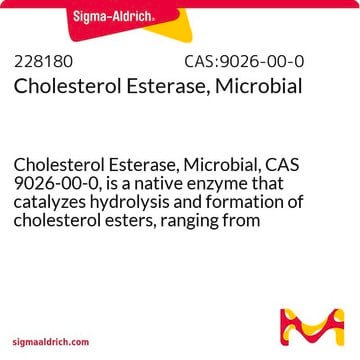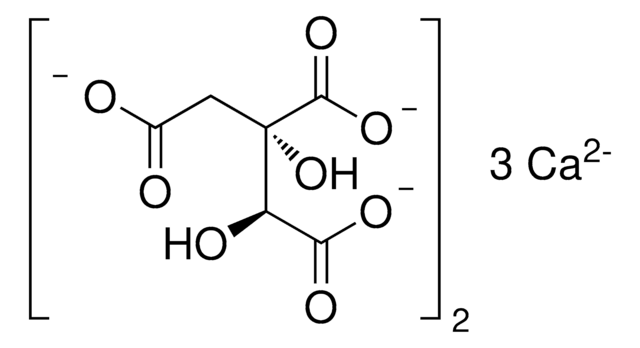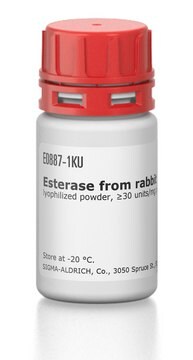26745
Cholesterinesterase aus Schweinepankreas
lyophilized, powder, white, ~35 U/mg
Synonym(e):
Cholesterin-Esterase aus Schweinepankreas
About This Item
Empfohlene Produkte
Biologische Quelle
Porcine pancreas
Form
powder
Qualität
lyophilized
Spezifische Aktivität
~35 U/mg
Mol-Gew.
Mr ~440000
Farbe
white
Lagertemp.
−20°C
Suchen Sie nach ähnlichen Produkten? Aufrufen Leitfaden zum Produktvergleich
Allgemeine Beschreibung
Pancreatic cholesterol esterase (CEase), also known as bile salt stimulated lipase, is a serine hydrolase belonging to the α/β hydrolase family of enzymes. They are released from the exocrine pancreas. Serine 194, histidine 435 and aspartate 320 represent the catalytic triad of the enzyme.
Anwendung
- in an in vitro simulated digestion model to improve the hydrolysis of carotenoid esters in the intestinal phase
- to analyze the bioavailability of phytosterol and cholesterol in the aqueous micellar phase of an in vitro simulated digestion model
- as a standard in enzyme activity assay
Biochem./physiol. Wirkung
Einheitendefinition
Sonstige Hinweise
Signalwort
Danger
H-Sätze
P-Sätze
Gefahreneinstufungen
Resp. Sens. 1
Lagerklassenschlüssel
11 - Combustible Solids
WGK
WGK 1
Flammpunkt (°F)
Not applicable
Flammpunkt (°C)
Not applicable
Persönliche Schutzausrüstung
Eyeshields, Gloves, type N95 (US)
Analysenzertifikate (COA)
Suchen Sie nach Analysenzertifikate (COA), indem Sie die Lot-/Chargennummer des Produkts eingeben. Lot- und Chargennummern sind auf dem Produktetikett hinter den Wörtern ‘Lot’ oder ‘Batch’ (Lot oder Charge) zu finden.
Besitzen Sie dieses Produkt bereits?
In der Dokumentenbibliothek finden Sie die Dokumentation zu den Produkten, die Sie kürzlich erworben haben.
Kunden haben sich ebenfalls angesehen
Unser Team von Wissenschaftlern verfügt über Erfahrung in allen Forschungsbereichen einschließlich Life Science, Materialwissenschaften, chemischer Synthese, Chromatographie, Analytik und vielen mehr..
Setzen Sie sich mit dem technischen Dienst in Verbindung.












